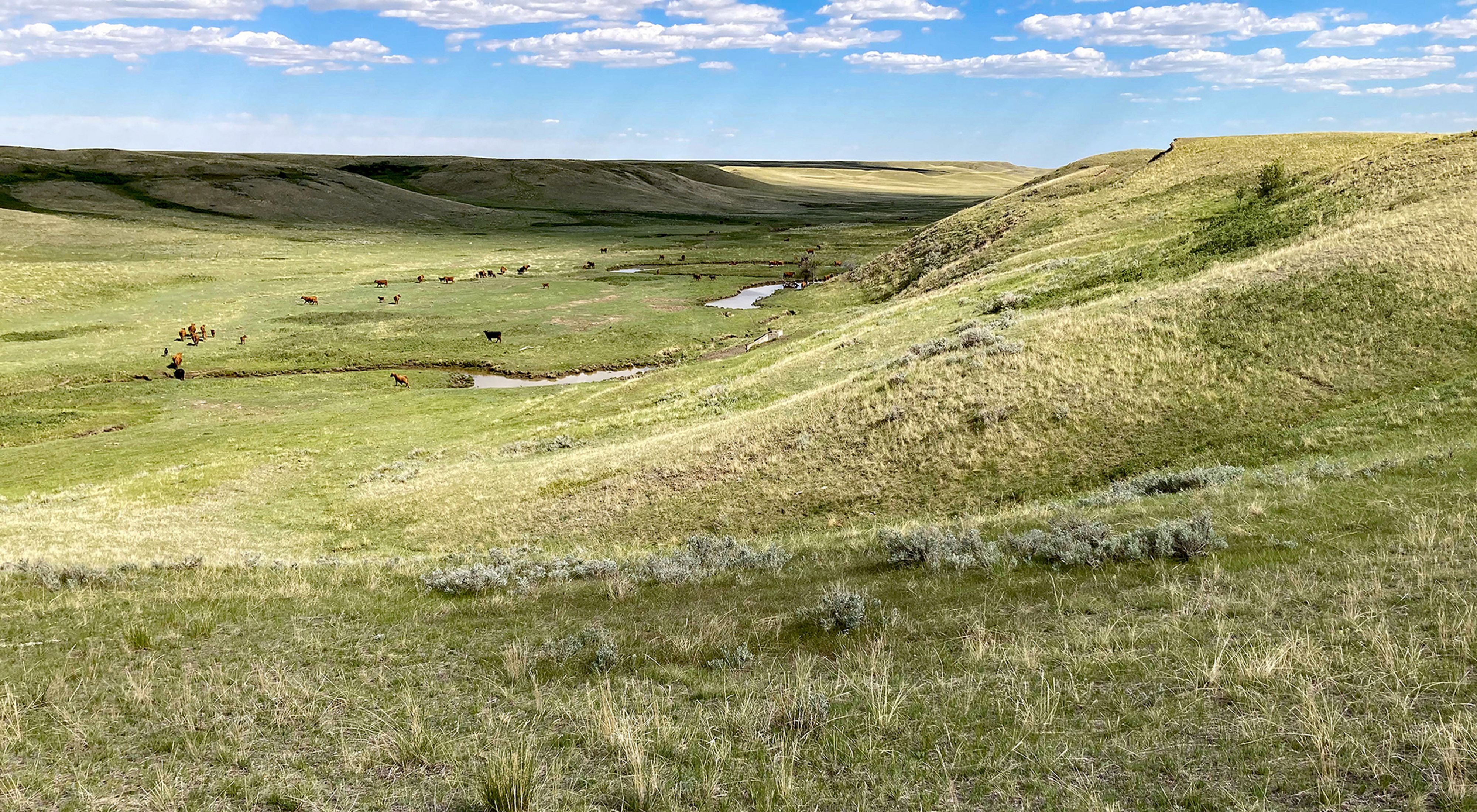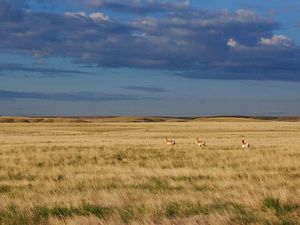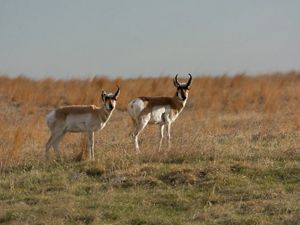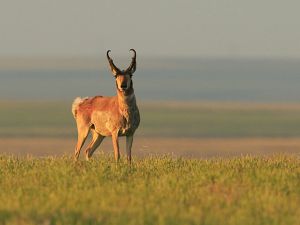Preserving Wildlife Migration and Ranching Traditions
Nature Conservancy easement does both.
Media Contacts
-
Bebe Crouse
Phone: 406-579-8559
Wildlife have been migrating along ancient routes connecting southern Canada and central Montana for millennia. It’s an epic and sometimes perilous journey and one that The Nature Conservancy (TNC) and landowner Sterling Carroll are doing their part to preserve. This summer, Carroll placed a fourth conservation easement his land northwest of Glasgow. With this 7,547-acre tract, Carroll now has conserved more than 37,700 acres of intact, native grassland. Like many area ranches, this land exists as islands in a sea of public land, significantly multiplying the impact of this deal.
According to TNC Grasslands Conservation Director Brian Martin, “That means for each acre of private land placed under a conservation easement here the natural values are retained on four acres of surrounding public land. And it happens while still meeting the needs of the local ranching community.”
WHAT’S THERE
This property is excellent mixed-grass habitat, so it’s not surprising to see pronghorn and greater sage-grouse finding refuge here—and the land is essential to their twice-yearly migrations. In fact, the land is the heart of the birds’ longest journey—a migration of more than 100 miles each way. Similarly disappearing birds that depend on this land include chestnut-collared longspurs, Baird’s sparrows, lark buntings and long-billed curlews. Other Species of Concern that find refuge here are the tiny swift fox and regal Ferruginous Hawk.
WHY CONSERVE IT
Halting the conversion of grasslands from grazing to more intensive uses keeps soil carbon in the ground and tons of pollutant-laden sediment from washing into the Mississippi and Missouri River systems. Intact grasslands and other grazing lands support wildlife movement and provide habitat for threatened and endangered species. Finally, healthy, intact grazing lands provide food and sustain communities and ranching families throughout the area.
Funding for this easement, as with others in the area, was made available by the Natural Resources Conservation Service of the U.S. Department of Agriculture.
The Nature Conservancy is a global conservation organization dedicated to conserving the lands and waters on which all life depends. Guided by science, we create innovative, on-the-ground solutions to our world’s toughest challenges so that nature and people can thrive together. We are tackling climate change, conserving lands, waters and oceans at an unprecedented scale, providing food and water sustainably and helping make cities more sustainable. Working in more than 70 countries and territories, we use a collaborative approach that engages local communities, governments, the private sector, and other partners. To learn more, visit nature.org or follow @nature_press on Twitter.



